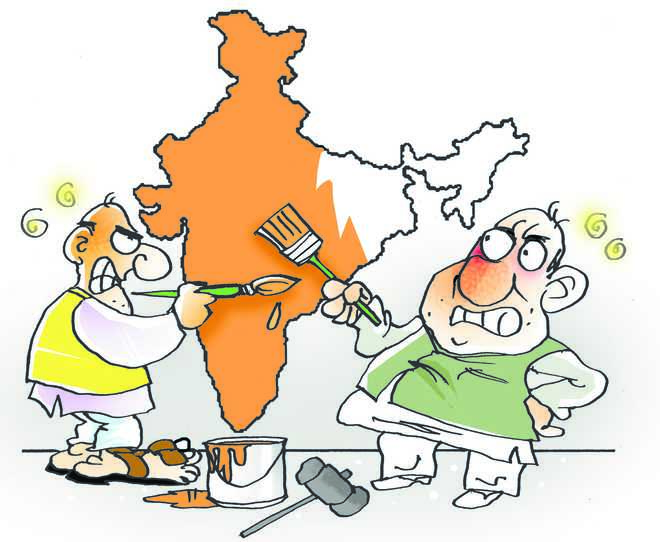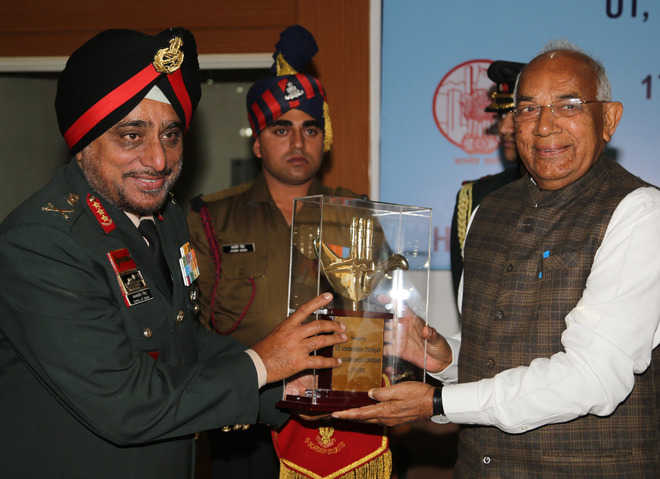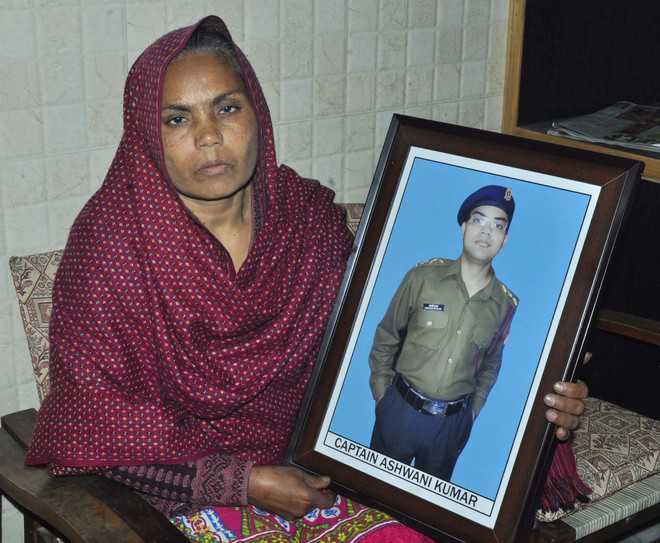I think it’s time now that we term OROP – One Rank, One Pension, as APAB – A Promise and Betrayal.
Betrayal seems to have become a habit with the present regime. The Prime Minister betrayed the people of India in his promise for repatriating the nation’s money illegally stashed away in off shore banks and now he has betrayed our great and loyal armed forces in his promise regarding judicious implementation of One Rank One Pension.
I am a much saddened man today, and I cannot understand why our great leader, who was beloved of the masses, beloved of the defence community of India, has decided to betray them so cruelly.
I recall that after Narendra Modi’s nomination as Prime Minister on September 11, 2013, at his first election rally in Riwari in Haryana on September 15, he assured the defence forces of his support to implement One Rank One Pension. This promise was continuously repeated at several other election rallies across the country. In fact it was the repetition of this promise, and the trust that the defence community placed in Modi, that compelled the then Finance Minister Chidambaram to include the OROP in his February 2014 budget, and make a token allocation of Rs 500 crores for it. Of course, they did nothing about it.
Resting on their hopes, the ex servicemen community contributed very significantly to the BJP victory especially in North India, where most of them reside – Himachal Pradesh, Uttarakhand, Rajasthan, Delhi, and of course UP, which has the largest number of ex-servicemen in the country.
Even over the last one month, the nation has witnessed the daily mortal risk faced by members of our defence forces, and the sacrifice demanded from them for defending our country. So that we can then sit back in our comfortable chairs and pass judgement about what went wrong or right. Just in the last one month, we have seen tragic loss of life of our brave soldiers in Pathankot, in Siachin, and at the J&K Line of Actual Control, something that has become a recurring event.
And we acknowledge and reward the sacrifice of our brave and patriotic soldiers by betraying the promises that were made to them by our political leaders.
Details of the OROP had been well defined in the Koshiyari Committee Report, 2012, which had been placed before Parliament and been unanimously approved. The NDA Government confirmed this definition in Parliament in 2014. Jaitley’s Budget of June 2014, continued with its assurance of implementing the OROP. Jaitley was then both Finance and Defence Minister, and the defence community was full of hope and expectation, thinking they would more speedily get their dues through a single window clearance.
But after the Budget announcement, a period of complete inertia set in, until Parrikar was appointed Defence Minister on November 9, 2014. The new Defence Minister held consultations with representatives of the defence organizations, and there was great satisfaction when in February 2015, he came out with a Draft Government Notification that satisfied the legitimate demands of the defence services. They eagerly awaited the implementation announcement in Jaitley’s next Budget of 2015.
But a shock was in store for them. The Budget of 2015 contained not a word about OROP or its implementation. There was disbelief and consternation among the ex-servicemen, and a sense of betrayal. And that is when the sad spectacle of the agitation by our brave and patriotic ex-servicemen started, which continues even today. Experts on statecraft, starting from Kautilya, Machiavelli to the present day state unequivocally that if a country’s army is turning on to an agitation mode, then something is dangerously wrong with the country’s body politic.
Parrikar sent his proposal to Jaitley’s Finance Ministry in February 2015, which hibernated, with the usual excuse that modalities are being worked out. Somewhere during this time, it is reported that the Prime Minister’s Office stepped in, and in September 2015, the hapless Parrikar read out an inconsequential statement (least expected from him, with all his experience and meticulousness) with a howler about VRS – the Voluntary Retirement Scheme – which is not even applicable to the armed forces! These were totally in variance with his own proposals of February 2015, and were made reportedly at the behest of the PMO.
Then started the ex-servicemen’s agitation and hunger strike in full force. And their ultimate humiliation and insult by the Delhi Police manhandling them and physically removing them from Jantar Mantar. I wonder if the Prime Minister is aware of the extremely negative impact this has had on the morale of serving soldiers, and that all news about the on-going agitation has been ordered to be blacked out in the Media, with not even paid advertisements being accepted by mainstream newspapers. This must have been the work of someone who manages these things. It is not difficult to find out who actually handled this shut out of news which must be known to the people.
In November 2015, the Government issued a notification regarding OROP, that was totally at variance with the definition of OROP, as approved by Parliament, or the pledge made by Modi during his election rallies.
Many injustices are evident in the notification –
1. Fixing the base year as 2013 as against 2014, (which swallows up their salary increment for one year), in violation of what had been accepted in Parliament in 2013 and 2014;
2. Averaging the pension for the rank between the maximum and minimum salary drawn in that rank, a purely subjective exercise, as against the definition accepted in Parliament that it must be determined as the same pension for the same rank for the same length of service;
3. Equalizing of pension every 5 years instead of it being done every year. This results in one rank – 5 pensions!
I’m sure the Defence Ministry, Finance Ministry and the PMO are aware that the fighting armed soldiers retire after 15-18 years of grueling service in the most inhospitable borders of our country, as against the non fighting soldiers who serve for longer tenures in more hospitable and more comfortable working conditions.
It is these fighting armed soldiers with shorter serving tenures and their widows who will be hit hardest, and most unjustly so, if the present formula of equalizing pension every 5 years instead of each year is implemented.
4. Finally, a one man Commission to sort out the anomalies of the package, without representatives from organizations of the armed forces, is not exactly a confidence inspiring measure. Would it not have been more convincing if the Commission was more like the Pay Commission and included the armed forces representatives as well?
I don’t know whether the Prime Minister is aware that our armed forces, patriotic and disciplined as they are, are getting bitter and disillusioned. The present Finance Minister lost to Amarinder Singh in the Amritsar Constituency by 94,000 votes. I am informed that the strength of ex-servicemen in that constituency is about 55,000, and with families, the figure would be the same that Jaitley lost by. Is that the reason for his grouse against the ex-servicemen, as is speculated?
Be that as it may, can anyone explain what the grouse of the Prime Minister against the ex-servicemen is?
I am not writing this piece without disclosing that by letters reproduced under I have communicated to the Hon’ble Prime minister my deep concern about this matter but obviously he is in no mood to respond at all.
Dear Prime Minister,
I do not enter into any correspondence with you for reasons which you know or can easily be given. But I with this in public interest and of course it involves some advice to you which you may not relish but my duty to the nation leaves me no option.
I was shocked day before that somebody whom you know was conveying to the nation his complaint against the three Army men who are in the forefront of the OROP agitation for compelling you to carry out your promise to the Army guys and their widows.
Your post election excuse for non performance of it is plainly not sufficient if not so ridiculous that it is already exposing you to public contempt.
I know that you think that you are infallible and all knowing. It is in my humble opinion an insane illusion.
During his television talks he shamelessly boasted that he would see three guys in jail. I wonder if you know that he had earlier moved the police with the same false complaint and the police rejected it. He has now been persuaded by some whom you know that the police will change their mind.
Dear Prime Minister please listens to what sensible citizens believe. They are convinced that the police is under corrupt pressure from your government. I am warning you that in every election you will encounter precisely public reaction of which you got a clear glimpse in Bihar.
This is an appeal from a humble citizen who was once your friend.
With utmost pain.
Sincerely Yours
Ram Jethmalani
Mr. Prime Minister, you cannot be that naive, that you are not able to see the designs of your trusted advisers plotting against you, who have brought you ignominy in Delhi and Bihar and now have succeeded in alienating you from the armed forces, who had placed implicit trust in you.
Take charge, eliminate your hidden enemies to whom you are giving a free hand, perform your dharma, and redeem your promise to the armed forces and ex-servicemen of our country.
You can still do it. Otherwise, you are plotting your own downfall.
Ram Jethmalani
born 14 September 1923, is an Indian lawyer and politician. He has served as India’s Union Law Minister and as Chairman of Bar Council of India. He has represented a sweep of cases from the high-profile to the controversial for which he has often faced severe criticism. He is the second highest paid Indian lawyer. Ram Jethmalani is known as a maverick lawyer with many distinctions to his credit. He obtained a law degree at an early age of 17 and started practising law in his hometown (in today’s Pakistan) until the partition of India. He married Durga Jethmalani and later, his second wife, Ratna Jethmalani. The partition led him to move to Mumbai as a refugee and he began his life afresh with his family. He has two sons and two daughters, of whom, Mahesh Jethmalani is a well known lawyer.































































 Photo for representational purpose.
Photo for representational purpose.

























































